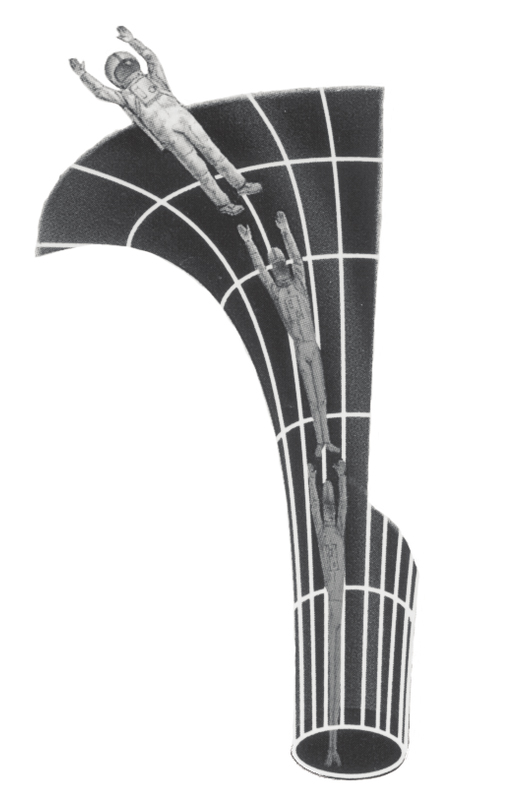7.2 Falling into a black hole
The event horizon is the ‘public face’ of a black hole, a one-way surface through which space flows at the speed of light. But it’s a blank face that gives nothing away. What lies inside the event horizon? And what happens at the centre?
One way to find out would be to cross the event horizon and fall into the hole. Once you’re inside though, you would never be able to tell anyone at home what you’d discovered. What would happen to a plucky astronaut who took on that challenge? It would depend on whose view you take – the astronaut or a distant observer.
The gravity around a black hole is so strong that time passes noticeably slowly, even to a distant observer, in accordance with gravitational time dilation. The closer to the event horizon, the slower it passes. The observer far away from the strong gravity will see the astronaut approach the event horizon ever more slowly but never get there. At the horizon itself, as judged by the distant observer, time will appear to stop.
The astronaut’s experience, on the other hand, is very different (and quite unpleasant). Eventually the tidal forces near the hole will become so strong the astronaut will be shredded by stretching from head to toe and squeezing from side to side (astrophysicists have coined the charming term ‘spaghettification’ for this process). The point at which that happens will depend on the mass of the hole. Approaching a smaller hole, the astronaut will be shredded well before reaching the event horizon, so they’ll never learn what lies within. But for supermassive holes, like those in active galaxies, the tidal forces are relatively gentle near the event horizon, and it would be possible to fall through unscathed. Indeed, our astronaut wouldn’t notice anything unusual when crossing the horizon. There’s no marker to warn of the point of no return. But once they’ve made it within the event horizon, there’s no way to transmit any discoveries back to the outside world. And about a tenth of a second before arriving at the centre, spaghettification awaits.

